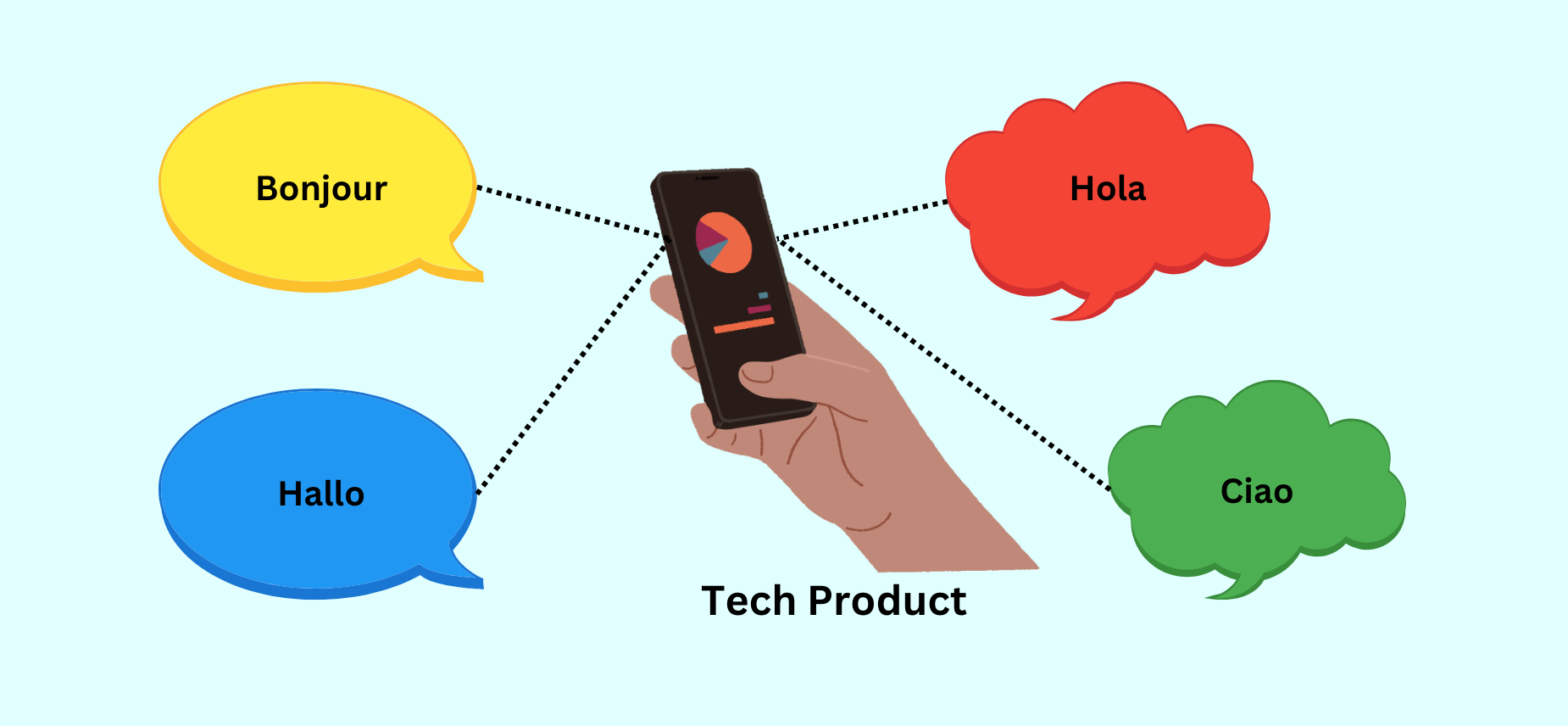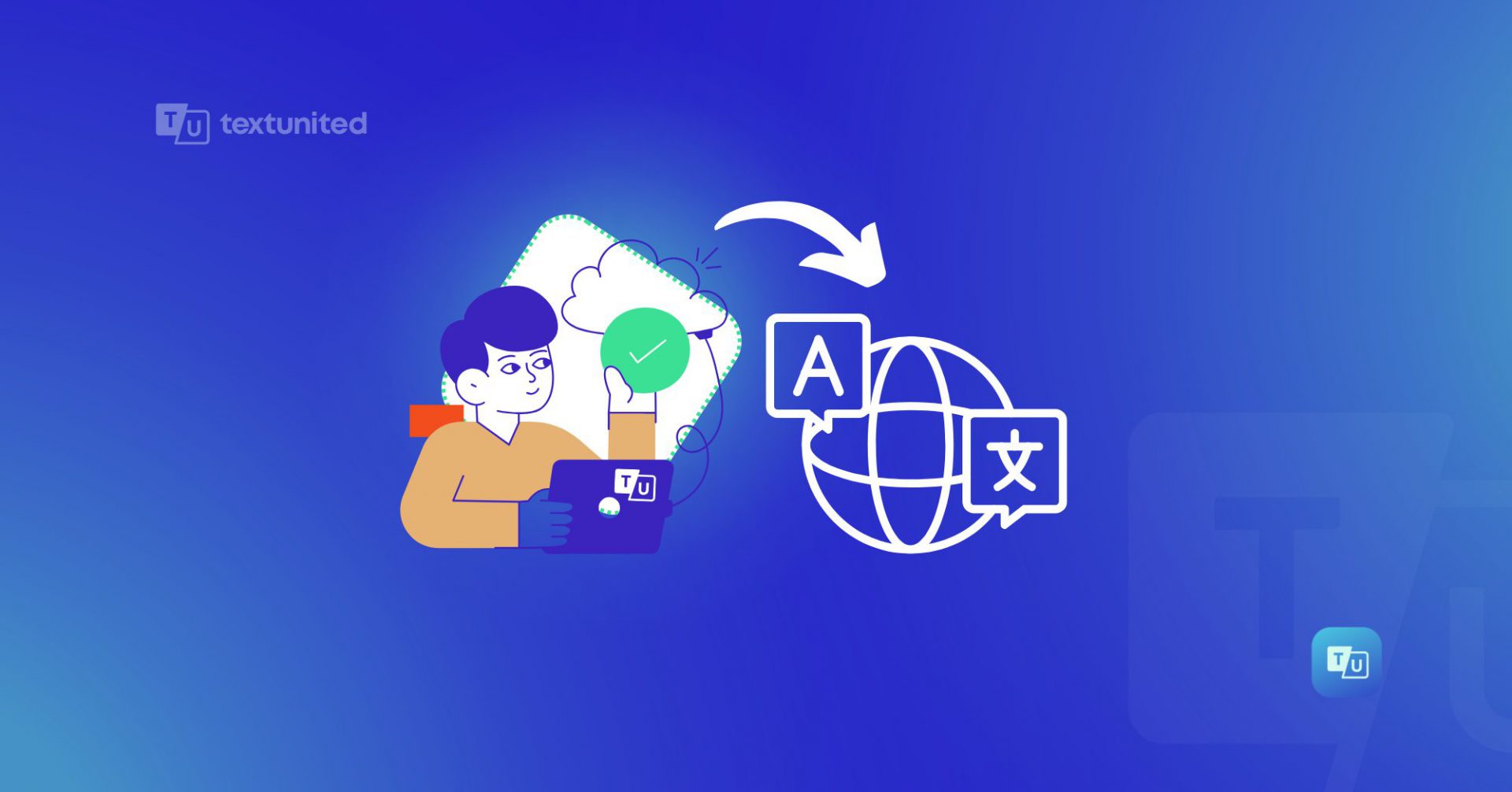Is your goal to make your tech products available internationally?
One major way of achieving this is through language accessibility. This means adapting your products so they can be used and understood by speakers of different languages.
If you’re part of a tech team or working in a SaaS company, it’s important for you to understand how language accessibility contributes to creating an inclusive user experience.
We’ll walk you through the key aspects of language accessibility that you need to know to make your products globally accessible!
What is Language Accessibility in Tech Products?
Language Accessibility in tech products is about more than simply translating text. It involves designing and adapting your products to accommodate the linguistic and cultural contexts of diverse user groups.
It involves developing product versions that cater to various languages to make sure users can interact with your products in their preferred language.
So, your product is able to “speak” to users no matter where they’re from.

Why is this important?
Well, if you want your tech product to have global reach, it needs to connect with people in their native language. It’s a big step towards making sure everyone can use and enjoy your product, no matter where they are.
Why is Language Accessibility Important for Global Reach?
It all comes down to making your product easy and enjoyable for more people to use.
When your tech product supports multiple languages, it opens doors to international audiences and helps you compete in international markets. People are more likely to connect with and use a product that communicates in their language.
For instance, if your tech company wants to enter new markets, language accessibility shows that you care about your users’ needs and cultural preferences. It will have a positive impact on your customer experience.
What Challenges Do Companies Face with Language Accessibility?
If you’ve read to this point, it shows you’re keen on making your tech products available in multiple languages and that sounds great!
Taking this step towards language accessibility is bold, but what comes next? What should you prepare for? What challenges might you encounter? It’s important to know these things and how to handle them. So, let’s talk about them.
Translation Process and Quality: How Do You Maintain It?
One of the biggest challenges is maintaining high-quality translation. It’s not just about converting words from one language to another.
The translation process requires an understanding of linguistic nuances, cultural differences and the cultural context of the source and target languages to make sure everything makes sense to local users. It’s important to provide context to translators to make sure translations are accurate and meaningful.
Sometimes, even a single word can have multiple meanings, so providing context helps translators choose the right one.
This is why having a skilled translator or professional translator who is a native speaker is so important, even when machine translation is used for initial drafts.
Local Expectations and Cultural Nuances: What Should You Keep in Mind?
Another challenge is meeting local expectations. Every region has its own cultural preferences and local culture that need to be respected.
So, you’ll have to adapt your product to fit different cultural norms and practices, which is an integral part of the localization process.
Technical Obstacles: How Do You Overcome Them?
On the technical side, there are obstacles like making sure your product is developed as internationalized software that supports multiple locales and right-to-left languages.
What does this involve?
It could involve engineering changes and making sure that your user interface is flexible enough to accommodate different languages and regional differences.
Time and Budget Constraints: How Do You Manage Them?
Lastly, there’s an issue of time and budget. The localization project can be resource-intensive that would require careful planning and allocation of resources.
So, it’s important to have a clear strategy and prioritize tasks to manage costs and timelines in the best way possible. You can read this article on how localization strategy simplifies translation management.
How Can You Develop a Successful Localization Strategy?
Alright, let’s continue from where we left off about the challenges. Now that you’re aware of the challenges, how do you actually create a plan to handle them? Let’s talk about developing a successful localization strategy.
Planning: What Steps Should You Take?
It all starts with a good plan. You need to figure out which target market(s) you’re aiming for and the languages you need to include.
Knowing your target audience in your target markets and what they expect from your product in their native language is important.
Start by listing your priorities and setting clear goals for your localization efforts. This will help guide your decisions and keep everything organized.
Execution: How Do You Put Your Plan into Action?
With your plan in hand, it’s time to roll up your sleeves and get to work. This means working closely with your team and possibly bringing in professional translators who understand the target language and cultural nuances.
Make sure your localization process includes adapting the user interface and content for different languages, while maintaining consistency across all versions.
You have to keep the local culture and user experience in mind. You can have regular check-ins with your team to make sure everyone is on the same page.
Maintaining Quality: How Do You Keep Standards High?
Quality is everything in localization. To maintain consistency and keep standards high across different languages, you should use tools like translation management systems such as TextUnited. These systems allow you to easily upload files for translation and include external links for additional resources and context.
These tools can help you manage your translation process, so that your translations remain consistent in your localized content.
So, when you have regular quality checks and feedback loops, you’ll be able to catch any issues early on and make sure your translated content meets the expectations of local users.
What UI Changes are Needed for Different Languages in Your Localization Efforts?
Let’s look at some practical changes you might need to make in your user interface (UI) for language accessibility.
Text Direction and Layout: What’s Important?
First up, text direction. Some languages, like Arabic and Hebrew, are read from right to left. This means your UI needs to be flexible enough to handle different text directions.
You might need to mirror the entire layout to make sure everything looks natural for users of these languages.
Fonts and Readability: How Do They Play a Role?
Fonts are another important factor. Not all fonts support every language, especially when it comes to Asian languages or scripts with unique characters, as well as European languages that may use special accents and diacritics.
You’ll want to choose fonts that are compatible with other languages and look good in all your target languages.
Also, remember that some languages can take up more space, so your UI should accommodate longer text without looking cluttered.
Layout Flexibility: Why Does It Matter?
Lastly, think about layout flexibility. Your design should be able to adapt to different amounts of text and varying content lengths.
So, this might mean using more dynamic layouts that can expand or contract based on the language used.
If you make these UI adjustments, you’ll be able to create a user interface that feels easy and natural, no matter what language your users prefer. That way, your product will be user-friendly and accessible to everyone.
What Are Some Helpful Tips for Increasing Language Accessibility?
After making those UI changes for different languages, you might be asking yourself this question:
“Okay, what else can I do to make my products even more user-friendly?”
Let’s look at some helpful tips for increasing language accessibility in your localization efforts.
Start Early in the Localization Process
Starting early with language accessibility can save you a lot of trouble later.
When you plan for different languages right from the beginning, you can design your product to accommodate multiple languages easily.
This way, you can spot and deal with any problems before they grow or become bigger issues.
Separate Code from Content: Why It Matters
Keeping your code and content separate is a smart move.
When text and language elements are stored apart from your software’s core code, translators can focus on the words without affecting the technical side.
This separation makes it much easier to switch languages without causing any technical problems.
Use the Right Tools for Language Accessibility
The right tools can really help with language accessibility.
When we talk about the right tools, we mean those that keep your translations organized and consistent across different languages.
For example, TextUnited is one of these tools that can help make your product feel unified. It can handle repetitive tasks, saving your team time and reducing mistakes.
So, with TextUnited taking care of the details, your team can focus on making your product even better for users around the world.
Testing and Continuous Improvement: How to Keep Up
Testing is very important to make sure your language accessibility efforts are on point.
Review the translated text and try out your product in every language you offer. This way, you can spot problems like text that doesn’t fit well or translations that don’t make sense.
Paying attention to what users say and making changes based on their feedback will help you keep improving the experience for all your users.
How Can You Measure the Success of Your Localization Accessibility Efforts?
Let’s talk about how you can tell if your language accessibility efforts are really working for your users and your business.
Are Your Users Engaged?
One way to measure success is to see how your users are interacting with your product. Are they spending more time using it? Are they coming back often?
Keeping track of these metrics can tell you if language accessibility is helping users feel more connected and engaged.
You can also look at how users from different regions are navigating through your product. If you notice an increase in activity from where you’ve introduced new languages, that’s a promising sign.
Is Your Business Growing?
Another thing to look at is how your business is doing overall.
Are you seeing more downloads, sign-ups, or sales in new markets? If so, that’s a good sign that language accessibility is opening doors to new opportunities and helping your business grow.
You might also want to track how these markets are contributing to your overall revenue.
If your language accessibility efforts are leading to higher sales in specific regions, it shows that you’re successfully reaching new customers.
Are Your Customers Satisfied?
Customer satisfaction is key. Are your users happy with their experience?
You can find out by looking at reviews, feedback, and surveys. If people are saying good things about how your product works in their language, that’s a win.
So, work towards setting up feedback loops where your users can easily share their thoughts on the language options.
When you get positive feedback about the ease of use in their native language, it is a clear indicator of success.
What’s the Return on Investment (ROI)?
Finally, think about the ROI. Are the benefits of your language accessibility efforts worth the investment?
Look at the costs involved and weigh them against the new revenue and opportunities it’s creating. This will help you see the bigger picture and understand the value of your efforts.
You can also compare the performance of your localized versions to see if they are outperforming the original, which can help justify the resources spent on these efforts.
Why Choose TextUnited for Your Language Accessibility Needs?
When your major goal is to make your tech product accessible globally, you need to choose the right partner. TextUnited is all you need. Let’s take a look at a few key reasons why.
Easy-to-Use Tools for Your Localization needs
Remember a time, for instance, when you were in the middle of a project, trying to manage multiple languages, and trying to keep everything organized?
If that sounds familiar, then know that TextUnited can help you manage the process much more easily. How?
TextUnited provides you with a translation management system that allows you to handle different languages and keep track of your localization efforts without the usual trouble or stress.
Fits Right Into Your Workflow
Switching between tools can disrupt your workflow and make it difficult for you and your team to stay on track. Does this sound relatable?
If so, then TextUnited is the tool you need. It’s designed to integrate easily with your existing systems, like your web applications or software products.
This means you can easily add language accessibility without interruptions.
Access to Expert Translators
When you’re translating your product, it’s important that the message feels genuine and relatable to your users.
TextUnited connects you with translators who are native speakers, meaning they have a deep understanding of the language and culture they are working with.
What’s Next for You?
You’ve seen how language accessibility can open up your tech products to a global audience and make them accessible and relatable to your users everywhere.
Now, it’s time to put these ideas into action.
The good news is, you don’t have to stress about “where do I begin?” because TextUnited is the perfect partner to take on your burden with expert guidance.
All you have to do now is sign up for a free trial and see how TextUnited can help you connect your tech products with a whole new world of users! Click here to begin!

